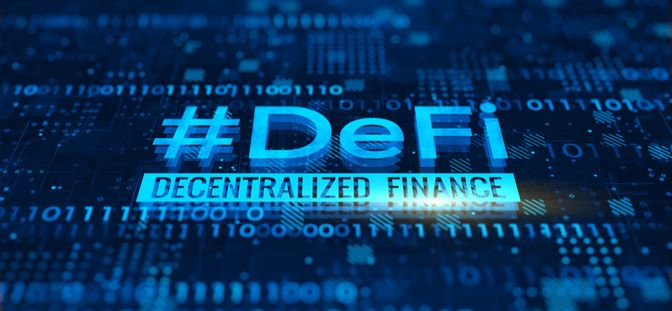DeFi, or called Decentralized Finance. Take cross-border payment as an example. When a person remits money to a person located in another country, it is generally necessary to find a financial institution to complete the payment task, but the financial institution will charge a certain fee in return. However, DeFi can decentralize the entire remittance process. Users can send cryptocurrency directly to the recipient from their wallets, without the need for intermediary services from financial institutions.

Features of DEFI
- Interoperable – the current financial system consists of walls with limited transferability or two-way access. Where interoperability is possible, it is controlled by intermediaries and rent-seekers. Open finance is defined by the platform, which can work together with a certain degree of transparency and complement each other. This helps to strengthen the compound effect of all our projects as a whole.
- Composable – for many people, Lego toys are their favuorite toys. You can create what you want through unlimited imagination. In DeFi, as long as the technology is feasible, any idea can be established. Composability refers to the concept that, like Lego toys, it can be selected and combined in a variety of combinations.
- Programmable – bitcoin completely changed the definition of currency. Ethereum has realized new financial instruments and assets that are more customizable than existing products and services. DeFi makes crypto assets join in a new era of financial mechanisms and grow in a rapid way.
- Accessible and inclusive – In traditional centralized finance, users must go through financial institutions if they want to obtain services, and they must accept various complex terms of financial institutions. As for whether the service can be completed and when it will be completed, it depends on the service efficiency and safety of the financial institution. And DeFi is open to anyone who can connect to the Internet, while greatly reducing costs, creating a world where value flows freely and breaking geographic restrictions.
Applications of DEFI
The largest DeFi protocol can serve as a decentralized analogue of many familiar services provided by existing financial institutions. The following illustrates some well-known decentralized protocols.
Decentralized stablecoin – DAI
The Maker protocol became one of the first basic components of DeFi by introducing one of the first decentralized stablecoin, DAI. Stable coins such as USDT and USDC are usually backed by U.S. dollar reserves. On the contrary, the Maker smart contract accepts ETH as collateral to mint DAI. The maker will over-collateralize the minted DAI and use MKR tokens to maintain price stability. DAI is the main stablecoin used in DeFi.
Decentralized lending – Compound
The Compound protocol is one of the first DeFi applications to gain mainstream attention as a lending protocol. Similar to Maker, users deposit collateral to borrow assets. However, Compound does not directly issue loans. Instead, it draws funds from the liquidity pool provided by Compound users. For example, users deposit USDC to earn interest and borrow ETH while paying interest.
Decentralized exchange – Uniswap
The Uniswap protocol is an automated market maker (AMM) protocol that allows users to trade crypto. Transactions are executed using a liquidity pool, and users deposit funds in the liquidity pool in exchange for interest. For example, users can deposit ETH and USDC to earn part of the fees collected by the agreement.
Comparison Between DeFi and Traditional Finance
| DeFi | Traditional Finance |
| Transaction activity is anonymous | Financial activity is tightly coupled with your identity |
| DeFi is open to any | Financial service needs prior application |
| The market is open 24 X 7 | The market will close when employees need breaks |
| Transaction activity is transparent and traceable | Financial activity cannot be checked because Financial institutions are closed books. |
| Your money is held by your own | Your money is held by companies. |
| You can control where your money goes and how it’s spent. | The company keeps all rights to use your money |
| There will sometimes be a crypto bonus when interacting with protocols | Only to pay fees without any incentives |
Summary
The emergence of DeFi has caused many applications in traditional finance to be transferred to this transparent and open source world. In the future, as the DeFi world changes quickly, due to its high efficiency and security features, there will be more extensive applications.
Join MEXC and Start Trading Today!



